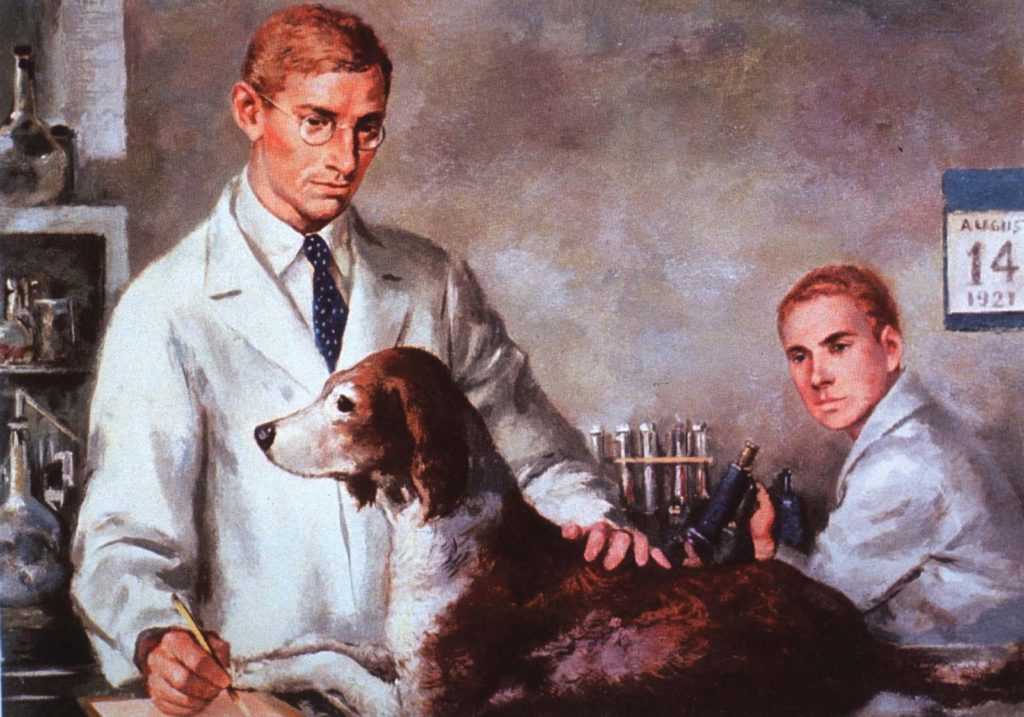Next to appear on the list of the Ten Greatest Canadians of the 20th Century is one of those dead, white, heterosexual males who are so harmful to society: Frederick Banting (1891-1941), the co-inventor of insulin and the youngest-ever Nobel laureate in Medicine.

Banting was to a farm family born in Alliston, Ontario and as a young man distinguished himself by flunking his first year of university in an Arts program at the University of Toronto. Nonetheless, Banting was admitted to Medicine in the following year, proving conclusively that those who fail in the Humanities may, nonetheless, go on to lead productive lives. The First World War broke out during his studies; Banting joined the Army which fast-tracked his medical training. He was sent overseas as a military doctor, was wounded in battle, and was awarded the Military Cross for bravery.
After the war, Banting’s medical career did not flourish but he was a respected lecturer on physiology. In 1920 he began to research diabetes and proposed a particular method by which insulin could be isolated from the pancreas and used to treat the disease. By 1922 he was able to save the lives of patients who would otherwise have died and the next year he was awarded the Nobel Prize for his discovery, along with the supervisor of the laboratory, J.J.R. Macleod who lent Banting his student Charles Best and the help of a biochemist, James Collip. Banting shared his prize money with Best, and Macleod shared his with Collip.
In 1934, Banting was knighted by King George V. He was involved in research for the Royal Canadian Air Force when World War II erupted. He was killed in 1941 in a plane crash while on the way to England to test a flying suit that would prevent pilots from blacking out.
